
- Introduction
- Actualites(video)
- Bombardopolis
- Preface
- Chapter 1
- Chapter 2
- Chapter 3
- Chapter 4
- Conclusion
- Epilogue
- Archives
- Liens
- Contact
CHAPTER IV
WESTERN SCIENCE VERSUS THE BLACKS
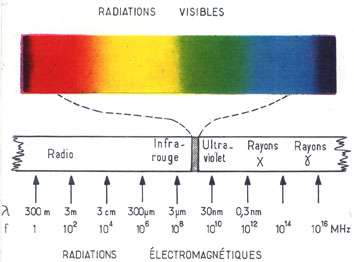
To justify and perpetuate its domination over the Black world, the West has adopted a “master” ideology whose inevitable erroneous effects reach even the Western scientific world, hindering its search for truth. The following documents prove this claim.
IN THE DEPTH OF THE UNKNOWN,
THERE ARE NECESSARY CONQUESTS
The well-known NASA scientist and author of popular scientific works, Professor Carl Sagan, together with his wife Linda, among other people, wrote the famous Space Message engraved on Pioneer 10 and meant for possible extraterrestrial civilizations which might be discovered — who knows? — somewhere in our Galaxy. Professor Sagan is a master of the art of using humor, and he is fond of allegories. That is why Lucien Bonnet wrote to himin the form of a parable on April 10, 1978.

Montreal, April 10, 1978
Dear Dr. Sagan:
It sometimes happens that a dream becomes a reality. That’s the case today. Through Mr. Emil P. Ericksen, Economic Officer of the Consulate General of the United States of America in Montreal, I am in communication with the American scientist whose works and research I most admire.
I would like to address a simple message to Professor Carl Sagan and his wife, who feel, as the year 2000 approaches, that the time is ripe to make our presence known by sending signals to other possible intelligent beings in the Universe. The message, which is the result of my patient research, I formulate as follows:
 On the cosmic scale, as on the terrestrial scale, blackness is an integral part of color and light processes.
On the cosmic scale, as on the terrestrial scale, blackness is an integral part of color and light processes.
My purpose is to inform you of this particular subject and the reasons that have led me to carry out my research, in the context of the problems of the very small country, whose history is as tortured as its geography, where I was born and grew up: Haiti, whose name means “land of mountains”. This country has been faced for years with the difficulties inherent to any collectivity confronted with a problem of identity. In Canada, where I live and to which I have become acclimatized, this subject still motivates my research, propels my efforts and explains the audacity of my words. In the particular context of a centuries-old conflict, where personal interest and racial origins confront each other, it is essential that we get to the bottom of things. At this point, it would be as well to point out that branch of energy physics, namely optics, where scientific taboos concerning color, darkness and light are furthered and maintained by trade secrets, patents and vested interests. A rational search for original, and even avant-garde, answers on a scientific and intellectual level would seem to be a necessary prerequisite to establishing a balanced situation.
Not being a “scientist”, but rather, perhaps the most obscure of all obscure researchers of all obscure ages, I am asking a special favour from Professor Sagan. I would like him to agree to examine my modest results and the demonstration there of, backed up by photos and films. Needless to say, they may be freely used for any purposes deemed necessary to the success of my undertaking. On one film, I wanted to assemble in my own way the elements and conditions that I think are indispensable to the analysis and synthesis of colors. I am submitting four films called “color separations” and the color proofs to support this finding.

The sentences I quote below are yours. They are taken from an interview that you gave to a French magazine reporter:
“…after Apollo, scientists were discouraged. Do you know why they were disheartened? Because the sky above the Moon is black. That made them depressed. Do you think this is a joke? Not at all. Scientists are more fragile than they look. But the sky above Mars is rose-colored and that gave them hope.”4
4 Delaprée, Catherine “ L’homme clef de Viking: Et maintenant il faut tout revoir…”,
(Le Point, August 16, 1976, pp. 48,49) [our translation]
I can see you and Mrs. Sagan smiling, seeming to say, “Roses live the life span of a rose, the space of one morning.”
The solution to the enigma of Space is not a “one-morning” task. Its darkness of an extraordinary depth, always so secretive and so intriguing, bordering on despair and insanity, fear and disgust, hatred and damnation, a consequence of ignorance or indifference, jealously hides incredible resources that would be of benefit to science, perceived only by such advanced, and wise, researchers as Professor Sagan.
With all due respect to the biblical Genesis, which from generation to generation teaches those who wish to hear it their way that “God divided the light from the darkness” (Gen. 1:4), and with all due respect to Sir Isaac Newton, who showed us all the colors of the rainbow with his prism, but who left us in the dark about the greatest unknown of all times, darkness itself, I insist that darkness — “the black rose of space”, arbitrarily denied as a positive value, always perceived negatively, discreet, hardly envious of the light which it absorbs, the better to conserve it — has passed for the absence of light, while in reality it is the extension of light.
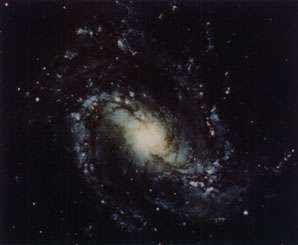 Since the beginning of time, a harmonious and complementary state has existed between light and darkness, whose equivalent effects are carefully balanced at the cosmic level, making us think, as sages of all ages have suggested, like Lavoisier, that in this coherent universe, “nothing is created, nothing is lost, everything is transformed”.
Since the beginning of time, a harmonious and complementary state has existed between light and darkness, whose equivalent effects are carefully balanced at the cosmic level, making us think, as sages of all ages have suggested, like Lavoisier, that in this coherent universe, “nothing is created, nothing is lost, everything is transformed”.
The question we ask ourselves most often is this: “What would our lives be without light?” All things being equal, and according to the Law of Conservation of Matter and Energy, we might ask, “What would life be without darkness?” Whether we say “darkness is an absence of light” or “light is an absence of darkness”, is this not a simple question of semantics?
Reconciling light with darkness is a simple message that any future human or extraterrestrial space traveler should be able to grasp without too much difficulty. In the interests of any advanced civilization, obtaining a workable combination of visible and invisible forms of matter or energy is a chance to surpass ourselves by extending our own limits.
The so-called luminous part of the Universe, be it ever so brilliant, so forceful, that it seems to eclipse all the rest, while left in the shadow of its over whelming radiance, cannot by itself constitute a whole. The latter is left to the perception and investigation of scientists—but again, we must have the courage to get to the bottom of things.
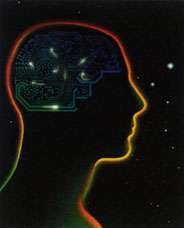 The bottom of things is often veiled by mentalities. Mentalities depend on the human brain. It is interesting to note that the thing we are most proud of, this wonderful human brain — physically, without our realizing it — has always functioned in utter darkness. Man’s skull constitutes, without a doubt, the best model of a dark room which has ever been conceived. On the optical as well as the psychological plane, one can easily imagine what roadblocks are likely to be encountered. When we wish to refer to the superior abilities of man, we use the term ”Gray matter”. Gray matter in a dark room, with or without a prism — what a delicate situation! Isn’t it where all the subtlety lies?
The bottom of things is often veiled by mentalities. Mentalities depend on the human brain. It is interesting to note that the thing we are most proud of, this wonderful human brain — physically, without our realizing it — has always functioned in utter darkness. Man’s skull constitutes, without a doubt, the best model of a dark room which has ever been conceived. On the optical as well as the psychological plane, one can easily imagine what roadblocks are likely to be encountered. When we wish to refer to the superior abilities of man, we use the term ”Gray matter”. Gray matter in a dark room, with or without a prism — what a delicate situation! Isn’t it where all the subtlety lies?
From the Gray lunar soil of the Moon and in the concerted harmony of constructive forms, visible and invisible, of channelled light energy, the white rose and the black rose of the Cosmos and the possibility of roses in all color shades — enough to make the sky of Mars blush red — represent the true challenge of space and the spaceship in modern times. Inertia, spectral speed, speed equal to or higher than that of light, and the scientifically controlled reversibility of the phenomenon, what a new synthesis, but also what a liberation! To compare is not to prove, but the dark hidden side of the Moon, however mysterious it may be, is not a path of no return.
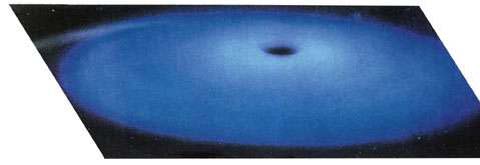
 At the edge of light, there is darkness. At the edge of darkness, we can find light. Reconciling the “Children of Light” (I Thess. 5:5) — of the zenith, the rising sun and the setting sun — with the “Children of Darkness” (I Thess. 5:6) could perhaps one day become a question of scientific mentality.
At the edge of light, there is darkness. At the edge of darkness, we can find light. Reconciling the “Children of Light” (I Thess. 5:5) — of the zenith, the rising sun and the setting sun — with the “Children of Darkness” (I Thess. 5:6) could perhaps one day become a question of scientific mentality.
“And there was evening and there was morning…” (Gen. 1:5).
Could this, Professor, be one of the most harmonious aspects of the vital cycle of space?
Thank you for your attention to my letter.
Yours very truly,
Lucien Bonnet
NEWTON’S THEORY OF COLORS IS FALSE
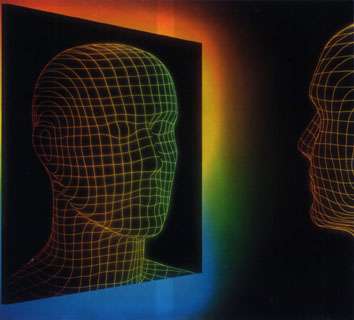
Following the article I published in the Montreal daily newspaper Le Devoir on February 26, 1986 concerning anti-Black prejudice in the West, the newspaper received reactions from all over Canada, both from the Black community and from scientific circles. Most people who reached me, while completely agreeing with me in my analysis of the deep causes of those prejudices, stated that they were not fully satisfied with what I said about the harmfulness of these prejudices in the scientific field, especially when I mentioned, as an example of that contagion, Newton’s Theory of colors.
Since not enough space was available in the paper, I could not express my point of view in detail. So I will now give a concise demonstration of why Newton’s Theory of Colors is false.
First of all, what is Newton’s Theory of Colors? Let me remind readers that the concept of “color” that stems from scientific experimentation is based on the demonstration in 1665 by the well-known scientist Isaac Newton.
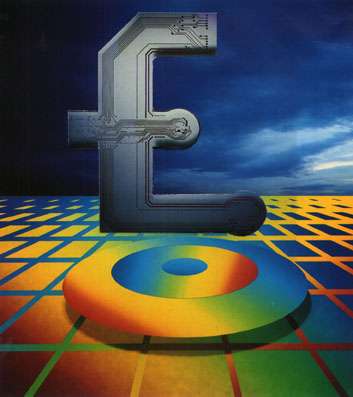
This experiment consists in running a visible light ray called “white light” through a prism in a dark room, breaking down that light into a continuous spectrum encompassing all the colors.
Newton thought he had there by proven that white light is broken down by the prism into a series of seven refracted rays which produced the colors from red to violet on the screen on which they are projected. He therefore concluded that white light contains various lights, each one of which is darker than the white light itself and each of which is part of the whole. And the darkest of all (real blackness), according to Newton, is simply an absence of light.
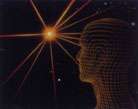 My point of view, which is shared by many scientists, is that when the dark room, which is actually black, is penetrated by the “visible light ray”, it turns into an area with a mixture of darkness and white light, so that it is no longer a “dark room”. This is the origin of “Newton’s error”, which is the result of an incorrect observation.
My point of view, which is shared by many scientists, is that when the dark room, which is actually black, is penetrated by the “visible light ray”, it turns into an area with a mixture of darkness and white light, so that it is no longer a “dark room”. This is the origin of “Newton’s error”, which is the result of an incorrect observation.
In other words, the basic elements of his experiment are not what he thought they were: in the course of the experiment, we are actually dealing with a quasi-dark or quasi-white room. Consequently, the prism in that quasi-dark room reflects the real situation; that is to say, the prism itself is already under the influence of this mixture of white light and darkness. That fact escaped Newton’s notice.
 In fact, the prism in the dark room where the experiment was carried out receives darkness from one angle and a beam of white light from the other. The prism thereby puts these two elements into action. The incident light ray is transformed, softened under the effect of the surrounding shade. Acting as a wave mixer, the prism integrates the white light and the darkness. It synthesizes them in vitro based on a given degree in the well-known “Gray scale” used in photography and color television. Under the effect of the incident ray, which acts like a projector, the refracted, very subtle gray ray passes through the prism. The continuous spectrum of all the colors is formed in a quasi-dark room on a quasi-white screen, given that the spectrum was born of both white light and darkness.
In fact, the prism in the dark room where the experiment was carried out receives darkness from one angle and a beam of white light from the other. The prism thereby puts these two elements into action. The incident light ray is transformed, softened under the effect of the surrounding shade. Acting as a wave mixer, the prism integrates the white light and the darkness. It synthesizes them in vitro based on a given degree in the well-known “Gray scale” used in photography and color television. Under the effect of the incident ray, which acts like a projector, the refracted, very subtle gray ray passes through the prism. The continuous spectrum of all the colors is formed in a quasi-dark room on a quasi-white screen, given that the spectrum was born of both white light and darkness.
 We therefore find that the continuous color scale, as we know it, is constituted by the breaking down, not of white light, but a mixture of white light and darkness — that is, of “gray”. As the German scholar Johann Wolfgang von Goethe wrote: “This is the proof of the existence of the law where by light is nothing else than a mixture of light and darkness, to different degrees.” [our translation] Thus, Newton’s theory of colors proves to be completely false.
We therefore find that the continuous color scale, as we know it, is constituted by the breaking down, not of white light, but a mixture of white light and darkness — that is, of “gray”. As the German scholar Johann Wolfgang von Goethe wrote: “This is the proof of the existence of the law where by light is nothing else than a mixture of light and darkness, to different degrees.” [our translation] Thus, Newton’s theory of colors proves to be completely false.
Nevertheless, the techniques used in industries dealing with photography, cinematography and television are still based on that erroneous theory.
In photography, laboratories are quick to discover in their work that the sum of the colors of the spectrum is gray, not white. That is why they are compelled to introduce the black color to obtain the white. There you have a demonstration in reverse that black is an integral part of light and color processes. Remember that this fact completely escaped Newton’s notice. Unfortunately, even though, in their use and application of the color scale, photo labs notice Newton’s error and correct it in practice, they still do not make the error more widely known.
Why ?
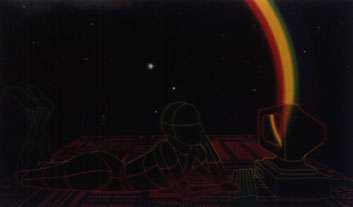
Some people might say that big industries using color processes — printing, photography, movies, television and even microprocessors — keep to that erroneous theory for the sake of major financial interests, especially concerning patents and trade secrets. In addition, certain anti-Black prejudices, deeply rooted in Western culture as well as in the field of optics, have to be taken into account at this “phase of rest and almost stagnation, rather than theoretical progress”.
It is then up to the scientific world today — researchers, university professors, etc. — to overcome such hindrances and correct Newton’s theory, in order to free the way for progress.
Lucien Bonnet
Article published in the Montreal daily newspaper Le Devoir on April 15, 1986. The author of the article, a Haitian-born Montrealer, has made a movie entitled “Où vas-tu, Haiti?” (“Where are you Heading, Haiti?”).
COLORS, OPTICS, AND RACISM
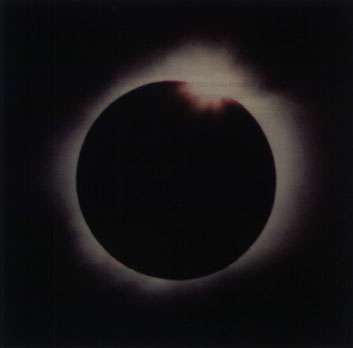 What if you were asked to upset all the painfully learned laws of optics? What if you were presented with the hypothesis that white was the absence of all colors, instead of the accumulation of all colors?
What if you were asked to upset all the painfully learned laws of optics? What if you were presented with the hypothesis that white was the absence of all colors, instead of the accumulation of all colors?
Mr. Lucien Bonnet, a Haitian-born Montrealer and a self-made specialist in the field of optics, states with conviction that blackness is an integral part of the light and color process; he has had a lot of trouble getting laboratories to give him exact copies of photos in which the superposition of films (yellow, magenta, Gray and cyan) produces a black contour, even though the picture was taken in broad daylight.
Why does Mr. Bonnet keep on insisting on this point? Behind the scenes at the 17th General Assembly of the International Astronomical Union, he kept hammering on that unorthodox theory, which, if it were adopted, would condemn to oblivion a number of authors of physics textbooks.
Mr. Bonnet has written to Professor Carl Sagan, a NASA astrophysicist. He has seen to it that this letter was published and he still believes that the scientific world as a whole — especially the world of optics — is not particularly interested in verifying all hypotheses.
Optics, he writes, “is the exclusive preserve of the scientific world, that beloved field whose seemingly complicated and dangerous approaches are actually transparently obvious.”
We may easily guess that, through his research, Mr. Bonnet is trying to set right people’s perspectives, to get to the very bottom of anti-Black racism. He says, “The bottom of things is veiled by ways of thinking” and “Sometimes, facts are so obvious that they “hit you in the eye” but, like ostriches, people bury their heads in the sand.”
Will Mr. Bonnet’s persistence overcome what he calls “aberrant scientific taboos”? He is, of course, aware of Asimov’s work on Black Holes. Professor Sagan had already let it be known, in everyday language, that scientists had felt depressed when they found out that the lunar sky was black… So they had better base their work on Mars with its pink sky!
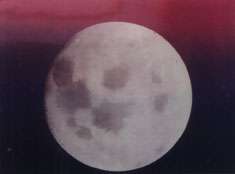 “Thinkers like Jacquard may praise differences, but the impact of such statements does not succeed in shaking the scientific and industrial establishment — who can measure the true influence of Kodak? — which is quite comfortable in its Newtonian strait jacket,” says Mr. Bonnet. However, he pays tribute to the researcher’s mentality of his former teachers, the Fathers of the Holy Ghost, who did not hesitate to give him high marks, even though his work ran counter to the official teachings.
“Thinkers like Jacquard may praise differences, but the impact of such statements does not succeed in shaking the scientific and industrial establishment — who can measure the true influence of Kodak? — which is quite comfortable in its Newtonian strait jacket,” says Mr. Bonnet. However, he pays tribute to the researcher’s mentality of his former teachers, the Fathers of the Holy Ghost, who did not hesitate to give him high marks, even though his work ran counter to the official teachings.
Clément Trudel
Article published in the Montreal daily newspaper Le Devoir on Saturday, August 25, 1979.
THE SPACE AGE, OPTICS, AND RACISM
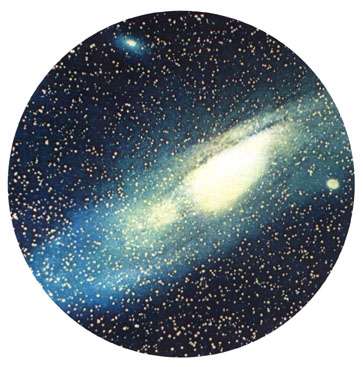
Racism, more particularly anti-Black racism, shows itself in many ways. But the general public is only aware of the visible tip of the iceberg: race riots, various kinds of segregation and obvious racist remarks. The other part of the iceberg, while less visible, is fundamentally more important and never ceases to affect human life. It constitutes, in short, a heavy handicap in inter-human relations and even blocks the road leading to scientific progress.
One scientist who has found this to be true is Professor Carl Sagan, the famous astrophysicist from NASA. Through the careful study of cutting-edge research in astrophysics, among other areas, he was able to detect a set of anti-Black prejudices which, in his opinion, hinder progress and represent brakes on the pursuit of new discoveries in the Space Age.
Professor Sagan’s astute observation provoked a positive and yet critical reaction on the part of Mr. Lucien Bonnet, a member of the Black community in Canada and a specialist in optics, that “exclusive preserve of the scientific world, that beloved field whose seemingly complicated and dangerous approaches are actually transparently obvious”.
The Western world, accepting Newton’s theory, has declared that white is the synthesis of all the colors; actually, according to Mr. Bonnet, the reverse is true: white is the “visible” analysis or breaking-down of light or colors, where as black is the “invisible” synthesis or compounding of colors.
In other words, according to the author’s thesis, darkness or blackness and thus, by extension, “Black Holes”, are a source of energy and light.
This raw material of light energy culminates, at its highest degree of radiation, in the neutralization of all the colors of the spectrum in the form of “white light”, to use the common term.
Consequently, “absolute blackness”, the absorption of all colors, is a divisible compound of light. Without any doubt, Newton’s theory, in excluding black, provides only a partial interpretation of the concept of light. Lucien Bonnet’s thesis is intended to show that black is not only an integral part of the light process but the true synthesis of it. In this view, the concept of light is thus seen to be a “divisible” whole including a range of intensities (or colors), where black is the “invisible” (or absorbed) form of light energy.
It was in order to introduce this new scientific vision of optics that Mr. Bonnet addressed the above-mentioned, particularly relevant, letter to Professor Sagan.
This letter, published in booklet form, aroused considerable interest in Canadian and Haitian circles.
In Canada, two prestigious publications — Le Devoir and Le Québec Industriel — mentioned it. While the 17th General Assembly of the International Astronomical Union was taking place in Montreal in August 1979, Quebec’s Telemedia Network, including Montreal television station Télé-métropole, interviewed the author, Lucien Bonnet.
In Haiti, the weekly magazine Le Patriote republished in its entirety the document sent to Dr. Sagan.
Aware that the ideas contained in that document might be of interest to the Christian world, the author also sent it to the highest authorities of the Catholic Church, as well as to the Supreme Pontiff, His Holiness Pope John Paul II.
A full understanding of the elements making up this subject will doubtless help the reader to consider color problems, like those of optics and racism, more serenely and objectively from now on.
Clément Trudel
Article published in the Montreal daily newspaper Le Devoir on June 25, 1980
